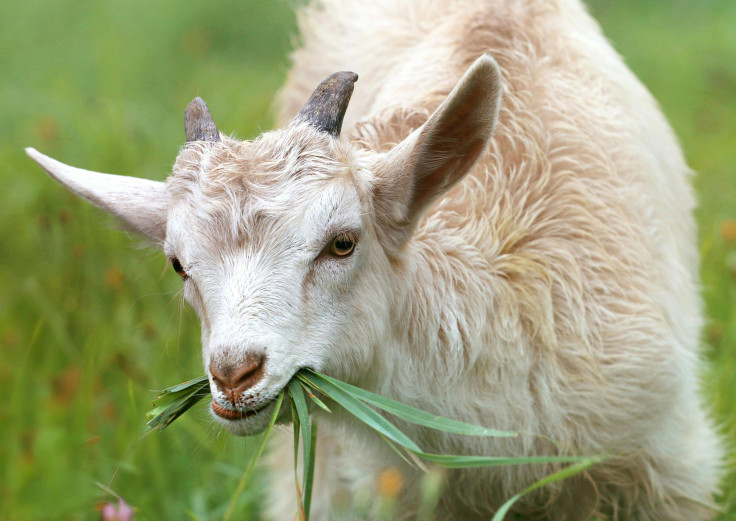Laguna Beach Fire: How Goat Grazing And Smart Reforms Helped Slow The Rancho Fire
Goat grazing and decades-old fire reforms helped slow the spread of the Rancho Fire in Laguna Beach

More than 30 years after a devastating wildfire, Laguna Beach's fire prevention strategy, including goat grazing and vegetation management, is being credited with helping reduce the impact of the recent Rancho Fire.
The Rancho Fire broke out in the hills above Laguna Beach, California, at approximately 2:15 pm on Sunday, 7 July. The fire began near Morningside Drive and Rancho Laguna Road and spread quickly through dry brush and steep terrain, prompting evacuation orders for La Mirada Street, Summit Drive, and Katella Street.
There is an active fire in Laguna Beach near Rancho Laguna Road & Morningside Dr.
— Supervisor Katrina Foley (@SupervisorFoley) July 7, 2025
The following areas must evacuate: La Mirada, Katella & Summit.
For your safety, please avoid the area. We will post updates as more details become available. Stay updated: https://t.co/hfyTKgZLlR
Evacuation warnings were later extended south of Del Mar Avenue, and Pacific Coast Highway was closed in both directions.
The Laguna Beach Fire Department launched an immediate response, deploying helicopters, fixed-wing aircraft and ground crews to contain the flames. Officials suspect fireworks may have ignited the blaze, though investigations remain ongoing. The fire burned approximately four acres before it was brought under control later in the day.
How the 1993 Laguna Beach Fire Led to Long-Term Wildfire Reforms
The city's current wildfire prevention policies were developed following the 1993 Laguna Beach Fire, which destroyed nearly 400 homes, forced the evacuation of 25,000 residents, and caused approximately £366 million ($500 million) in damages.
In the aftermath, city officials introduced a series of fire mitigation reforms. These included building additional water reservoirs, updating fire-resistant building codes, installing early warning systems, and launching a citywide programme to manage vegetation in fire-prone zones. A notable component of this initiative was the introduction of goat grazing to naturally clear overgrown terrain.
Laguna Beach Fire Prevention: How Goat Grazing Reduces Wildfire Risk
The Laguna Beach goat grazing programme, launched in the 1990s, plays a key role in fuel reduction efforts. According to the Laguna Beach Fire Department, herds of up to 600 goats are deployed annually across more than 360 acres. These goats graze on dry brush and weeds that could otherwise serve as fuel for wildfires.
The Federal Emergency Management Agency (FEMA) has recognised the programme as a cost-effective and environmentally friendly method of maintaining defensible space, particularly in steep or inaccessible areas. This natural strategy complements other mitigation efforts, such as manual clearing and public education.
How Laguna Beach's Goat Programme Helped Slow the Rancho Fire
Fire officials noted that areas impacted by the Rancho Fire had recently undergone vegetation management, including goat grazing. As a result, fuel loads were reduced, which may have helped slow the fire's spread and allowed emergency crews more time to contain the flames.
While formal reviews are ongoing, officials believe that pre-emptive land management contributed to the limited spread and lack of structural damage.
Climate Change and Wildfire Risk in Laguna Beach: A Growing Concern
Experts continue to warn that climate change is intensifying wildfire risks across California. Rising temperatures, prolonged droughts, and drier vegetation have extended fire seasons and increased the likelihood of fast-moving blazes.
Laguna Beach, situated within a wildland-urban interface, remains particularly exposed. City authorities have reaffirmed their commitment to investing in both traditional firefighting capabilities and preventative land management strategies.
Lessons from the Laguna Beach Fire: Why Prevention Matters
Following the Rancho Fire, fire safety analysts and city officials are assessing the role of long-term mitigation strategies in limiting the fire's impact. Measures such as goat grazing, enhanced infrastructure, and fuel reduction appear to have supported containment efforts.
Other fire-prone communities are observing Laguna Beach's approach as part of wider regional evaluations of effective fire prevention in high-risk areas.
© Copyright IBTimes 2025. All rights reserved.

















